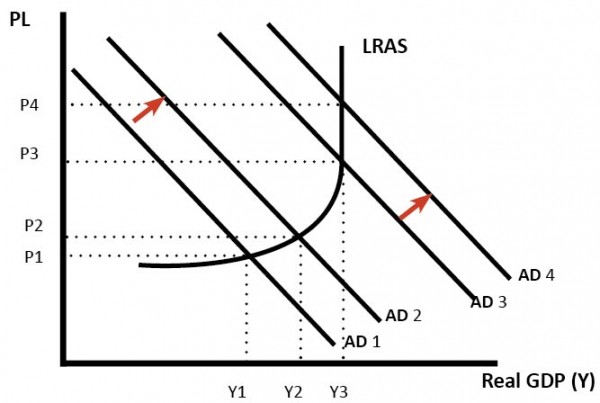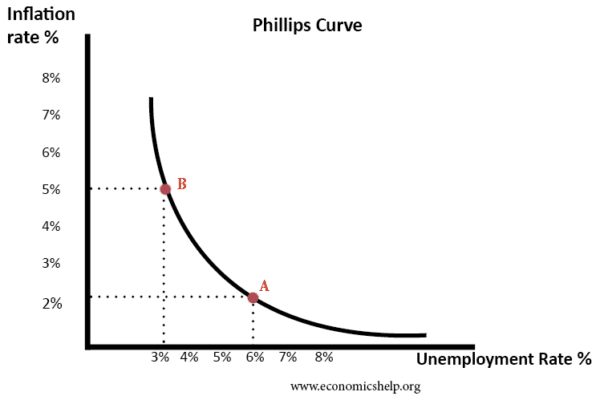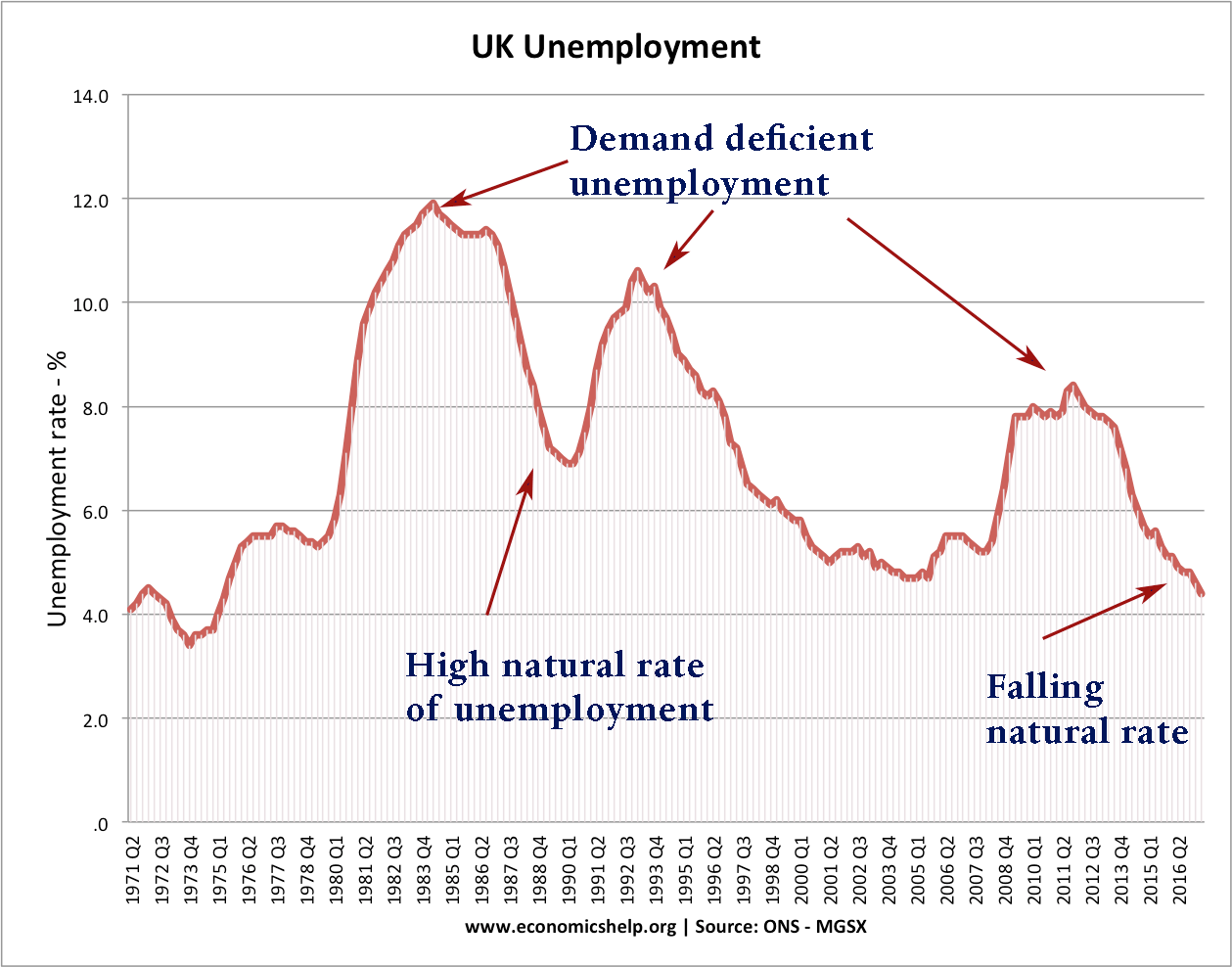- Demand side policies include expansionary fiscal and monetary policies.
- For example, the govt could increase Govt spending and lower taxes. G is a component of AD, therefore, this will cause AD to increase, there may also be a multiplier effect causing AD to increase even more than the initial effect
- Lower tax rates will increase consumer’s disposable income and therefore spending will increase.
- Also, the MPC could cut interest rates, this makes borrowing cheaper and encourages spending rather than saving, this will also have the effect of increasing AD
- The above diagram shows an increase in AD causing higher real GDP and a higher price level. Note there will only be an increase in real GDP if there is spare capacity in the economy.
- If real GDP increases then there will be higher demand for workers, as firms need to increase production to meet demand. Therefore, unemployment will fall.
- The Phillips curve shows the trade-off between unemployment and inflation, as demand is increased there is lower unemployment with a trade-off of higher inflation.
- However classical economists disagree with this Keynesian analysis they argue that the LRAS is inelastic therefore an increase in AD will not cause a rise in Real GDP.

- This diagram shows that an increase in AD will cause an increase in Real GDP in the short run. However, as prices increase firms face an increase in their wage bill so the SRAS shifts to the left. This causes Real GDP to return to its original level of output. Therefore any fall in unemployment will only be temporary according to classical economists.
- Therefore they believe there is no trade-off as the Phillips Curve suggests. This Monetarist view gained credence in the 1970s when there appeared to be a breakdown in the relationship between inflation and unemployment
- It is also possible that demand-side policies fail to increase AD, in the Great Depression (and in Japan in the 1990s) cuts in taxes did not increase AD because consumer confidence was very low. Therefore fiscal policy failed to reduce unemployment.
- Cyclical unemployment is only one cause of unemployment. Over types of unemployment include Real Wage or (classical unemployment) this occurs when trades unions force wages above the equilibrium reducing demand for labour
- The Natural rate of unemployment refers to the supply side factors such as structural and frictional unemployment. this type of unemployment will occur even when the economy is at full output. Therefore these types of unemployment will not be reduced by demand-side factors. Classical economists argue that all unemployment is due to supply-side factors such as occupational immobilities, labour market imperfections and geographical unemployment.
Conclusion to Essay
Demand-side policies can only reduce cyclical unemployment, which occur during a recession. Classical economists argue that this will only last a short time and the markets will clear of their own accord. However, in practice, this often doesn’t occur. Govt intervention can shorten a recession and therefore reduce unemployment. Nevertheless, it will also be important for the govt to tackle different types of unemployment with supply-side policies.
Related
https://www.economicshelp.org/blog/1364/economics/phillips-curve-explained/
https://www.economicshelp.org/blog/571/unemployment/trade-off-between-unemployment-and-inflation/


